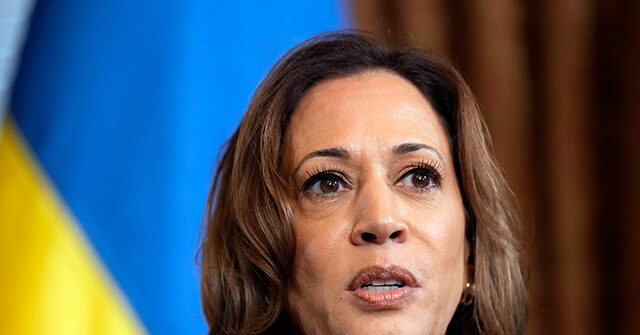In a recent unscripted interview, Vice President Kamala Harris faced scrutiny over U.S. strategy regarding the ongoing war in Ukraine. When asked by CBS correspondent Bill Whitaker what success looks like in ending the conflict, Harris provided a convoluted response, emphasizing that any resolution must involve Ukraine and adhere to the UN Charter. This conversation highlights the challenges and frustrations surrounding the Biden-Harris administration’s approach to the war, particularly amid accusations of failing to engage directly with Russian President Vladimir Putin for potential peace negotiations. President Joe Biden’s comments about Putin in 2022, stating, “For God’s sake, this man cannot remain in power,” further complicate diplomatic efforts and illustrate the deep divide between the U.S. and Russian leadership.
The origins of the conflict trace back to the Biden-Harris administration’s initial presidency, during which Russia expressed apprehension about NATO’s potential eastward expansion and Ukraine’s desire for membership in the alliance. Moscow had made clear that any encroachment into its sphere of influence was unacceptable, fundamentally framing the war as a response to Western provocations over NATO. The administration’s firm stance on supporting Ukraine’s self-defense efforts is apparent, but this has raised questions about long-term strategies for peace, especially as the war continues to claim lives and escalate tensions.
Harris’s responses during the interview, particularly regarding meeting with Putin, suggest a rigid diplomatic stance that prioritizes Ukraine’s input in any negotiations. She indicated that any discussions with Russia would need to involve Ukrainian leadership, highlighting the administration’s commitment to Ukraine’s sovereignty. However, with increasing casualties and a prolonged military engagement, critics may argue that such a formula could hinder immediate progress toward resolution. Harris’s assertion about NATO membership being a future discussion also showcases the delicate balancing act of supporting Ukraine while managing relations with Russia.
During a subsequent meeting with Ukrainian President Volodymyr Zelensky in Washington, Harris reiterated the U.S. commitment to aid Ukraine in its fight against Russian aggression. Her declaration that no other nation should dictate NATO membership for Ukraine underscores a broader viewpoint that allows states to determine their alliances—an important assertion of sovereignty she articulated during a previous trip to Munich in 2022. This perspective aligns with U.S. foreign policy priorities of promoting self-determination among nations, but raises questions about whether these principles will translate into actionable support and long-term solutions.
In contrast to the current administration’s approach, former President Donald Trump has positioned himself as a potential peacemaker, claiming he could resolve the conflict if reelected. Trump characterized the situation as a tragic and complex puzzle that should never have arisen. His recent engagement with Zelensky highlighted a different diplomatic tone, focusing on a “Victory Plan” for Ukraine and outlining a vision for a just peace. Trump’s assertions appeal to perceptions of strong leadership that could quickly bring about a resolution, contrasting starkly with Harris’s cautious and collaborative posture.
The ongoing tensions, characterized by the differing approaches of current and former leaders, underscore a pivotal moment in U.S. foreign policy. The complexities of the Ukraine-Russia conflict persist as both the Biden-Harris administration and Trump attempt to navigate the delicate landscape of international relations while addressing domestic and global expectations. The ultimate outcome relies not only on military strategies and support for Ukraine but also on effective dialogue and negotiations with Russia, elements that remain contentious and fraught with geopolitical implications. Wendell Husebo, a political reporter, emphasizes the backdrop against which these discussions unfold, advocating for a clearer pathway toward understanding the intricate dynamics of the region as they continue to develop.

